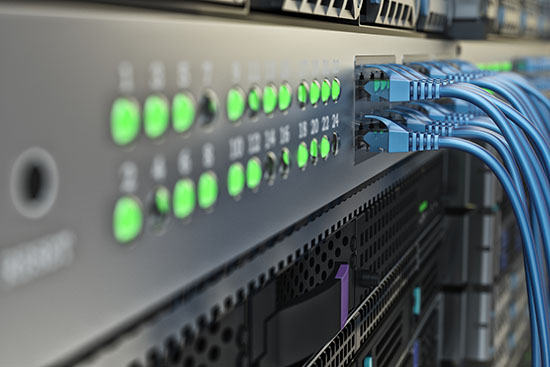Article by: James Young, Director of CommScope’s Enterprise Data Center division
Data centre networks are under pressure to evolve to provide higher capacity. This applies to virtually all types of networks. Over the last few years, many use more fibre optic cables and transceivers to the point that fibre optics is now the default choice. Clearly the trend is to higher-speed fibre optics.
The design of data centres with higher capacity and optimal cost is evolving. One of the hot topics is what type of fibre to deploy: multi-mode or single-mode. The fashionable answer is to deploy single-mode cabling, the kind that long-haul telecom and transoceanic networks use.
Yet in data centres, single-mode cabling is only recently making a significant entry. While single-mode systems are great for long-distance networks, they have traditionally been expensive and power-thirsty when compared to multi-mode, the workhorse of data centre networks. Some network operators advocate that single-mode is destined to replace multi-mode due to its superior bandwidth. However, many operators prefer an analytic versus trendy approach.
There is a significant demand for longer distance support in larger hyperscale data centres, which is not generally the case for enterprise data centres. Single-mode is better at longer distances, and if the cost can be trimmed, then perhaps it is a good choice for larger data centres with a need for much higher capacities. On the other hand, if multi-mode can also deliver higher capacity with acceptable distance support and competitive costs, then there are reasons to continue with it.
A typical considerations list for data centre networks looks a bit like this:
- Support for the distances and connections
– Some need 500m and some need less than 100m
– Some need point-to-point cabling with few connections, while others want the reconfiguration
benefits that a structured cabling approach delivers. - Capacity
– Some need 400G or more and others are happy with 10G
– All agree that more capacity will be required in the future - Supply risk
– Some are okay with limited supply scenarios
– Others need the supply assurance of standards-based solutions - Upgradability
– Some have multi-generational evolution objectives
– Others have a more limited upgrade expectancy before replacement - Cost
– Everyone wants low cost
– The issue here is how to measure the true cost of the various options over time
Some data helps evaluate these listed items. Here, looking ahead a bit at the relative cost of 100G data centre network options, the cost of the channels, including transceivers and cabling, is shown as a function of channel length. This provides guidance for the technologies you might consider deploying in your data centre.
Comparing this graph to that of slower data rate solutions at similar points along their maturity curves, it is evident that the cost of single-mode networks has become more competitive in comparison to multi-mode. This has been enabled by transceivers that are optimised for data centre applications. New multi-source agreements have produced PSM4 (4-pair parallel optics) and CWDM4 (duplex single-pair), which are excellent single-mode options for data centres like the hyper-scalers build, needing longer (i.e. 500m) reach. The IEEE 100G-DR (single-pair) and 400G-DR4 (four-pair) standards are due early in 2018, and will also support short-reach single-mode options. Recently, Finisar announced an eSWDM4 transceiver that will support 400m over a single-pair OM5 cable. This narrows the reach difference between newer, low cost single-mode options and newer multi-mode options that also include four-pair SR4 and eSR4.



